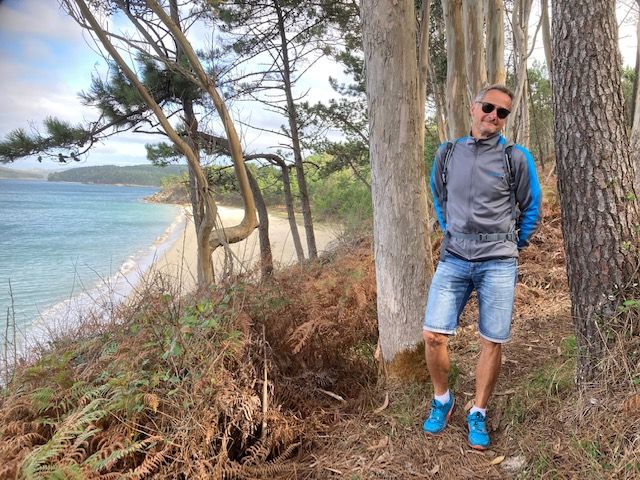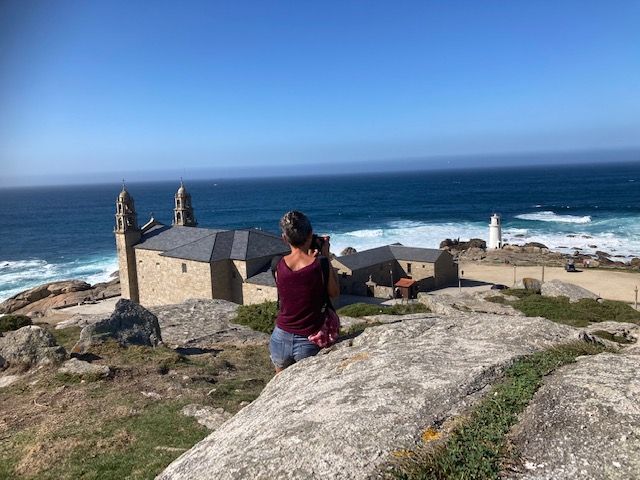
Wie kommt die Olive in die Flasche?
vakantio.de/der-traum-von-zeit-und-meer
Trade vultures for seagulls ...
Çap edildi: 07.10.2022




































Habar býulletenine ýazylyň
Mountains for the coast ...
Hiking boots for a surfboard ...
Pilgrimage to the end of the world for standing in the middle of life ...
The surfboard didn't work out. There were no waves or rentals to be found, so we focused on what we can do - cycling. There was a beautiful little road along the coast. Since Spain always has a parallel road to the main road and a highway to the parallel road*, you can cycle or hike on the original road peacefully without cars. Despite the many tourists, a stop at Playa de las Catedrales was worth it. We would have liked to do our laundry, but the machine broke, so we continued with dirty laundry and rainy weather towards the 'end of the world'. Even the rain doesn't stay there, and we found a very nice little campsite with a wonderful view of the sea.
And yet, we put on our hiking boots again and walked to Muxia, a very varied route with a spectacular ending at Santuario da Virxe da Barca. When a pilgrimage ends here, with the waves and sunshine, one can be deeply moved. The following day, we also visited Cabo Finisterre, but only the sunshine was comparable at that moment. So if you're going to pilgrimage and reach the end of the world, then the end should be in the waves in front of Muxia.
*Already in France, we found the highways to be very sparsely populated, but in Spain, there is hardly any traffic on the roads. How is that possible? It can't be because of tolls, as they have mostly been abolished. Over 600 km of private highways were returned to the state because the private highway companies went bankrupt. Gas stations and rest areas are abandoned by the roadside. In the 90s, road construction in Spain was arguably driven forward somewhat unrealistically, and new roads were built everywhere. This makes every small town easily accessible and pleases tourists, but it can't be profitable.
PS: Micha is grateful for the time-out and enjoys everything very much.
Habar býulletenine ýazylyň
Jogap

Syýahat hasabaty Ispaniýa
